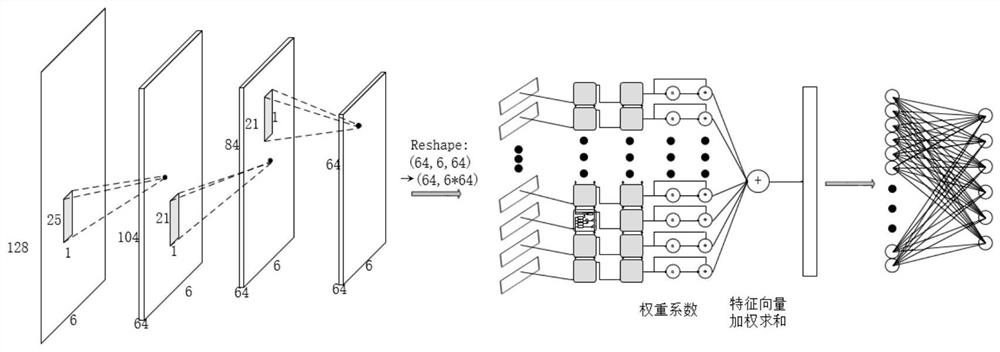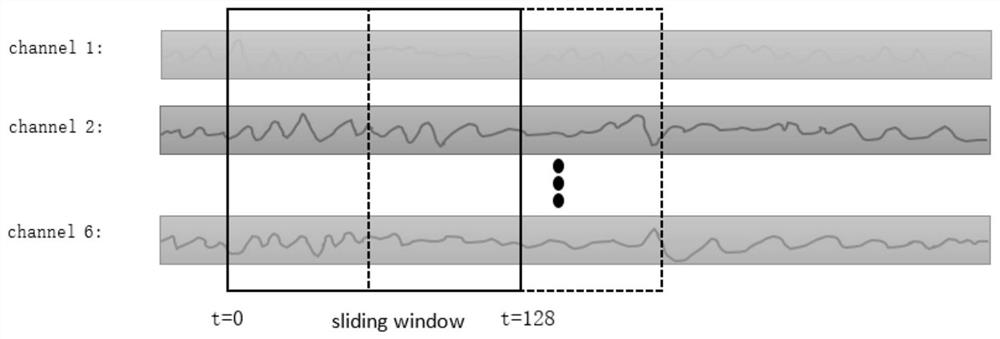A method of pedestrian moving direction recognition based on mobile phone inertial sensor
An inertial sensor, moving direction technology, applied in the field of deep neural network, can solve the problems of ineffective data mining, big data noise, low recognition effect, etc., to achieve the effect of fast calculation speed, high recognition accuracy, and not easy to be affected by the environment
- Summary
- Abstract
- Description
- Claims
- Application Information
AI Technical Summary
Problems solved by technology
Method used
Image
Examples
Embodiment Construction
[0026] The technical solutions of the present invention will be further described below with reference to the accompanying drawings and embodiments.
[0027] The technical core of the present invention is a deep neural network model, such as figure 1 As shown, the model consists of three convolutional layers, two LSTM units, an attention mechanism module, and a fully connected layer. The first, second, and third convolution layers each contain 64 one-dimensional convolution kernels. The lengths of the convolution kernels are 25, 21, and 21, respectively. The number of hidden layer neurons in the two LSTM units is 128. , the number of neurons in the output layer of the fully connected layer is 4, which corresponds to four moving directions. After the sample of size (128,6) is input to the first convolutional layer, the feature map FM of size (104,6,64) is obtained 1 , FM 1 Input to the second convolutional layer to get a feature map FM of size (84, 6, 64) 2 , FM 2 Input to...
PUM
 Login to View More
Login to View More Abstract
Description
Claims
Application Information
 Login to View More
Login to View More - R&D
- Intellectual Property
- Life Sciences
- Materials
- Tech Scout
- Unparalleled Data Quality
- Higher Quality Content
- 60% Fewer Hallucinations
Browse by: Latest US Patents, China's latest patents, Technical Efficacy Thesaurus, Application Domain, Technology Topic, Popular Technical Reports.
© 2025 PatSnap. All rights reserved.Legal|Privacy policy|Modern Slavery Act Transparency Statement|Sitemap|About US| Contact US: help@patsnap.com



